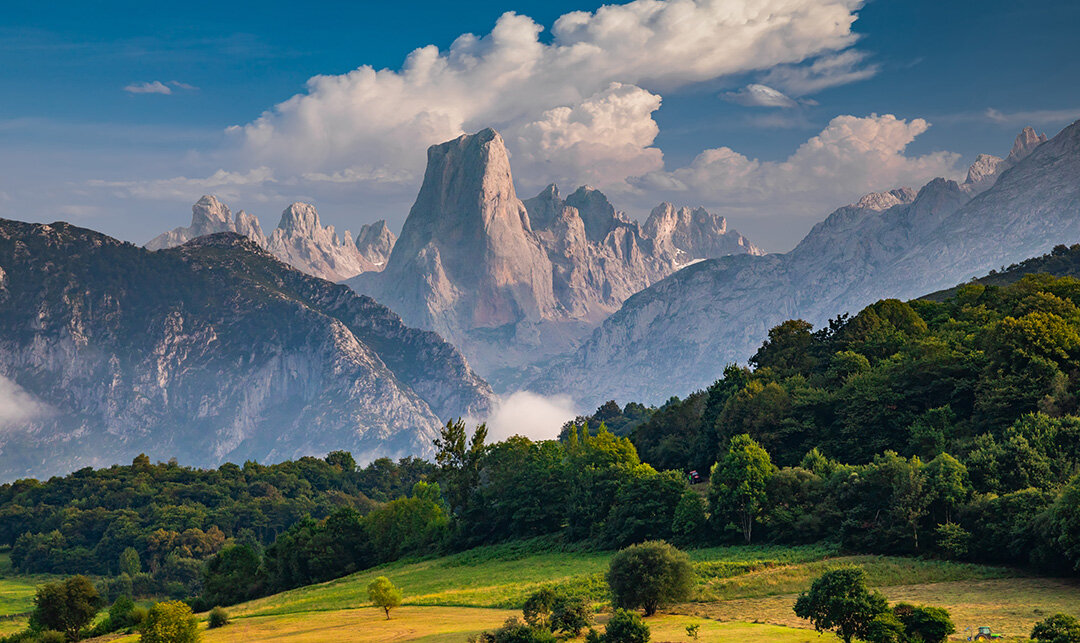
Whoever goes to Asturias for the first time, without having read or heard anything about it, instantly gets two surprises: first, that it is a place steeped in history and tradition; and second, that its inhabitants have a unique, friendly nature.
Over a thousand years ago, amid high limestone peaks, green mountains, lush forests, mighty rivers, lakes, springs, waterfalls, orchards, high mountain meadows and vast grazing lands... a kingdom emerged that had thirteen kings, the first of whom was Pelayo, whose memory is especially preserved at the Royal Site of Covadonga in Cangas de Onís. The last was Alfonso III, known as The Great, and for nearly one hundred and fifty years in between the two, a great deal of history –battles included– which was to be decisive in the social and geographical evolution of the Iberian Peninsula as well as that of present-day Spain. Asturias was the first Christian kingdom of this European peninsula and many traces remain of that ancient kingdom –the most prominent among which is Asturian Art, also known as Pre-Romanesque Art, declared World Heritage by UNESCO. There have likewise endured numerous reminders of the nobility and lineage that runs through the bowels of this land, which, since the 14th century, also comprises a Principality, the region most closely linked to the Spanish monarchy since those ancient times right up to the present day.
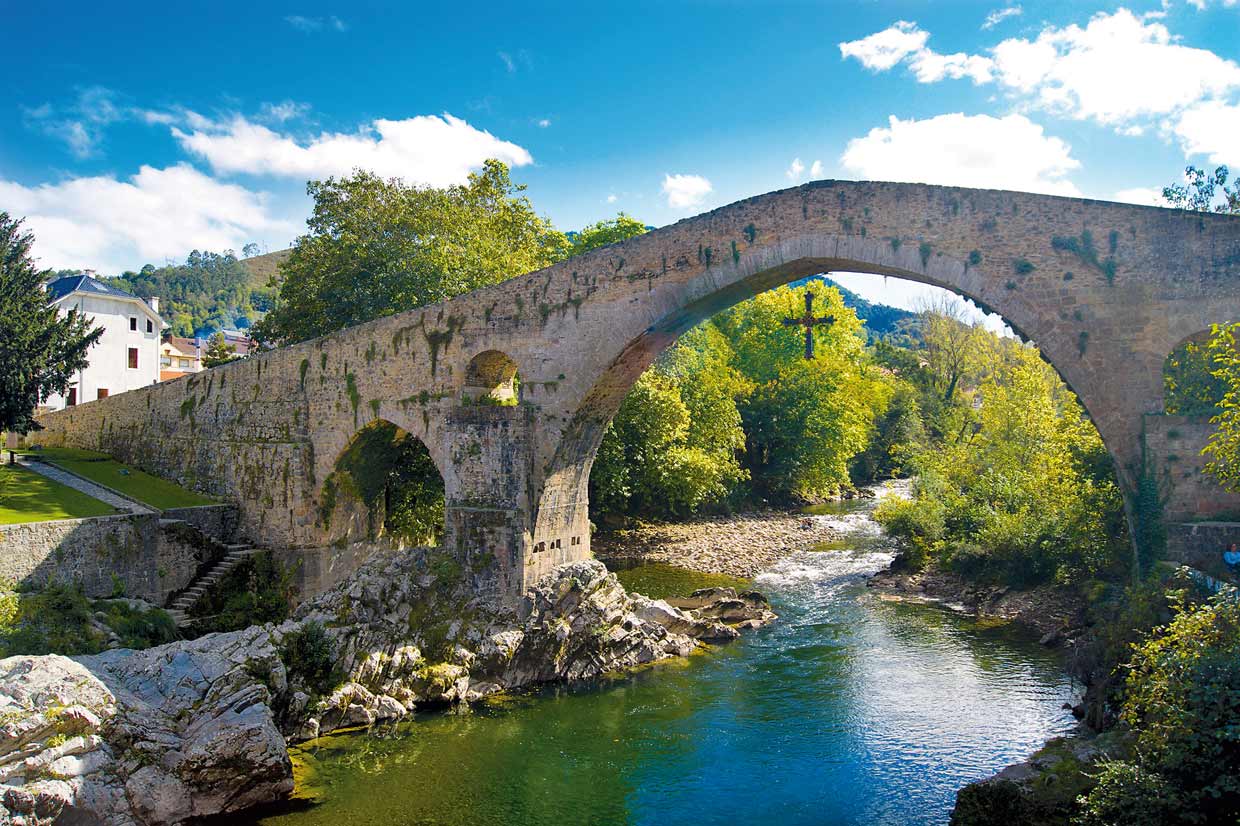


And between the 14th and 20th centuries, so much history…a history of a beautiful, yet forceful rural Asturias, which lives on today; of the development of three cities - Oviedo (the capital), Gijón and Avilés; of almost twenty fishing towns and numerous historic towns and villages; of over 200 beaches and a well-preserved coast; of rich industrial heritage, the result of technological and manufacturing prosperity; of 6 Biosphere Reserves; of 5 World Heritage Caves; of a rich cuisine that makes the region, among other features, the leading cheese-producing area in Europe… and much, much more. A veritable Natural Paradise!
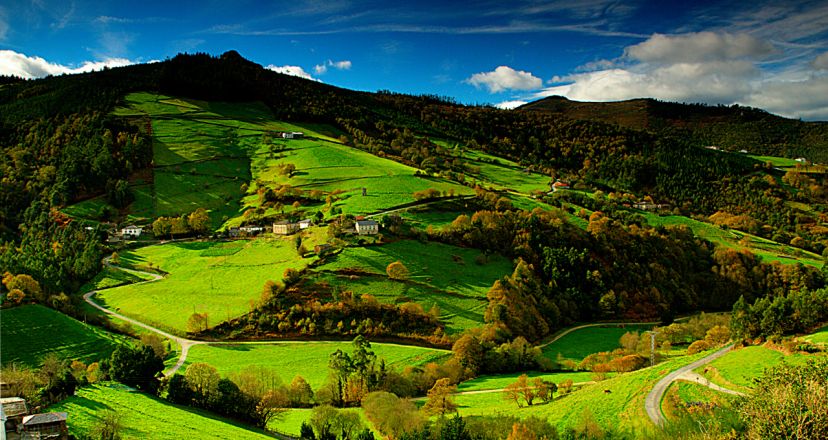

In this region, the cult of the palate can be perceived by the fact that practically everything is celebrated, commemorated, remembered or enjoyed around a table covered with a tablecloth. The green Asturian terrain is a symbol of fertility, food from a rich fertile land and pasture for cattle producing their famous meat and milk. More than three hundred kilometres of coastline and some of the best Cantabrian ports guarantee excellent fish and shellfish cuisine. It can be said, therefore, that Asturias is a true natural pantry.
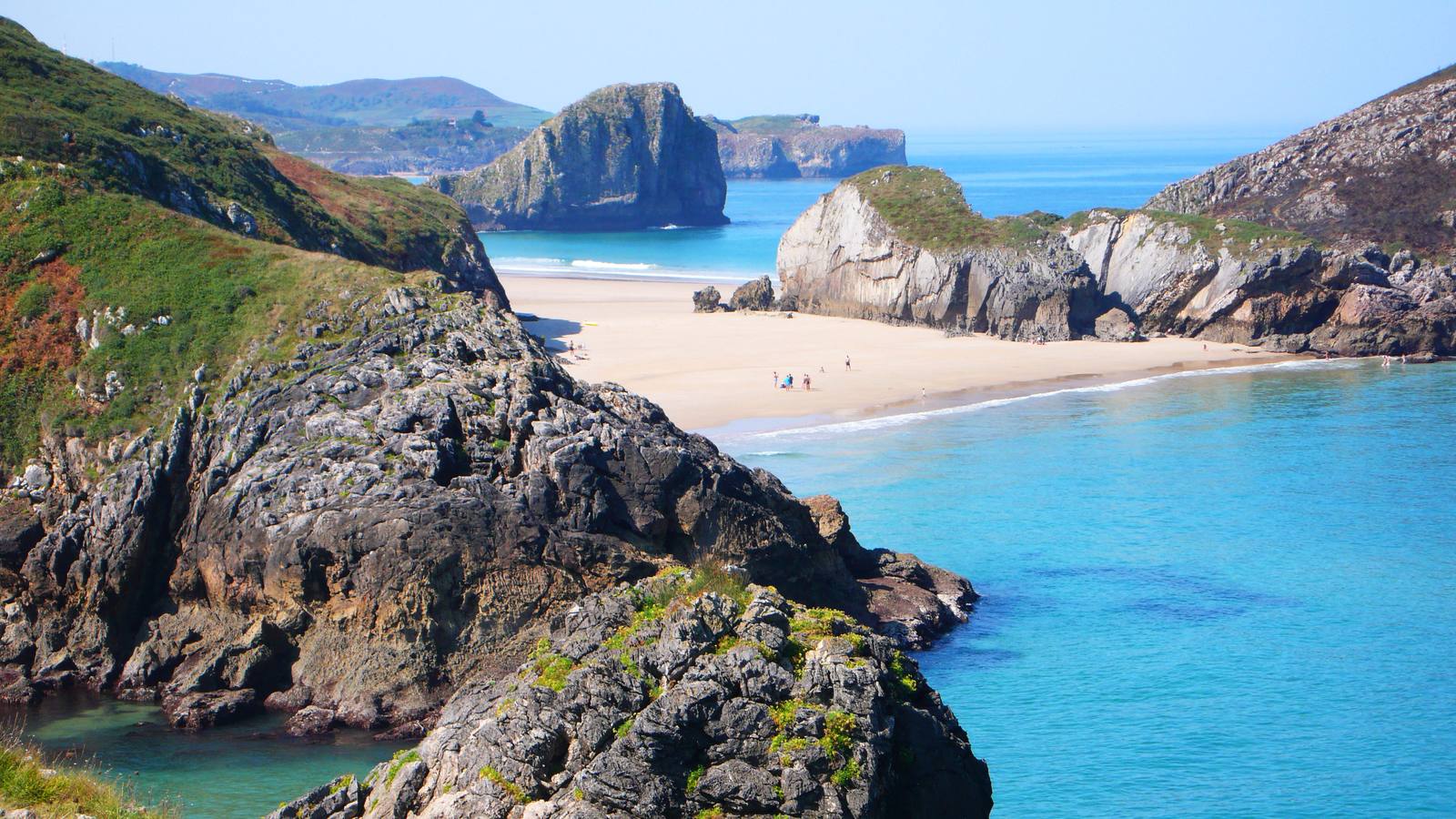

When one head towards southwest Asturias you encounter a surprisingly different landscape. Mountains rising to infinity and winding roads racing towards their shelter, where their tiers appear and we get our first impression 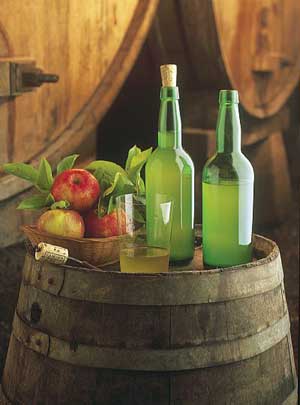 of that heroic mountain viticulture that is practised in Asturias and which constitutes a unique spectacle. They may look like simple terraces capriciously won from the abyss, but you just have to sharpen your gaze to see in their soil the vineyards that stand up proudly, obvious proof that you have entered wine country.
of that heroic mountain viticulture that is practised in Asturias and which constitutes a unique spectacle. They may look like simple terraces capriciously won from the abyss, but you just have to sharpen your gaze to see in their soil the vineyards that stand up proudly, obvious proof that you have entered wine country.
However, Asturias doesn’t just have wine. In the year 60BC, Estrabon, the Greek traveller and writer, cited cider without ever having tried it. Today this would almost be a sacrilege. In the juice of the apple, the Asturians have not just their local drink, but also a cultural element that forms part of their way of seeing life, an umbrella beneath which territories are joined together, and even a sign of identity. The sensation of pouring cider, for example, is a unique experience, which is experienced in a special way in Asturias because it is the only cider-making region in which this playful-gastronomic ‘ritual' is carried out.
Asturias is a Natural Paradise and this reality as can be proved by the numbers: a third of Asturias's territory is environmentally protected. For this reason, the traveller encounters beautiful untouched landscapes, among which stand out six gems, the six biosphere reserves recognised by UNESCO.
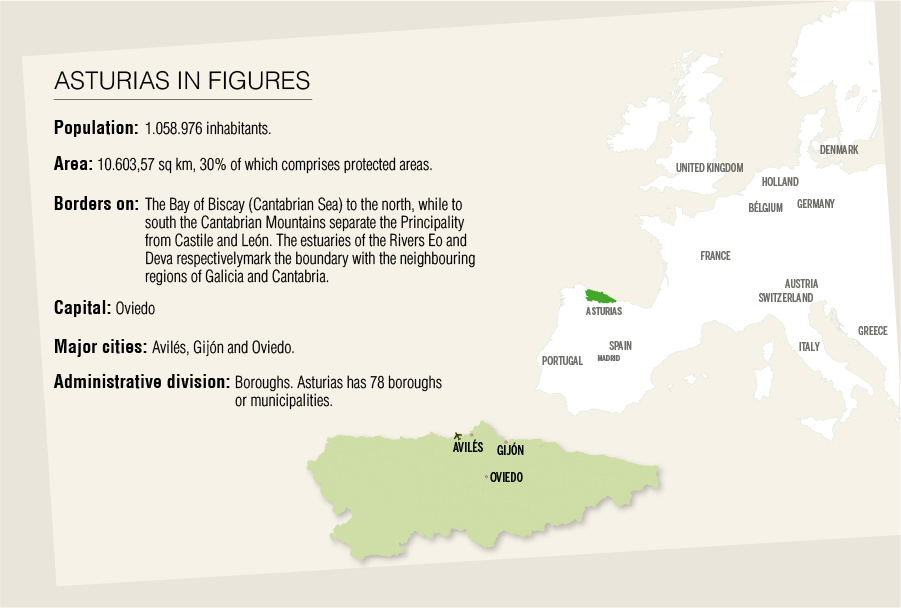
The Asturian coast is one of the best-preserved in the whole of Spain. So much so that its purity makes the cliffs, the level green coastline and the beaches a perfect refuge for those who like untouched nature. In addition, their fishing villages – totalling almost twenty along the three hundred and forty-five kilometres of the coast - have grown, adopting impossible shapes, on hillsides which shelter the ports, and even remember the days when they were whaling docks, landing points for kings and a shelter from storms. Asturias has so much more to offer so why not give it a go and experience the ‘Green Spain’.